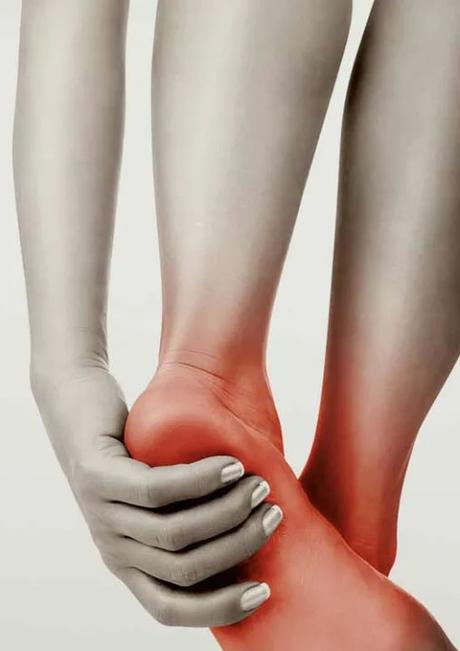Heel spurs or inflammation of the plantar fascia (plantar fascia) is a common cause of heel pain.
This condition is caused by inflammation of a thick band that runs through the sole of your foot and connects the heel bone to the toes.
Plantar fascia Inflammation of the plantar fascia, commonly called heel spurs, usually causes severe pain that begins in the morning with your first steps when you get off the bed.
After getting up and moving, the pain usually subsides, but it may come back after standing for a while. Swelling of the soles of the feet is more common in runners.
People who are overweight and those who wear inappropriate shoes are also at risk for plantar fasciitis.
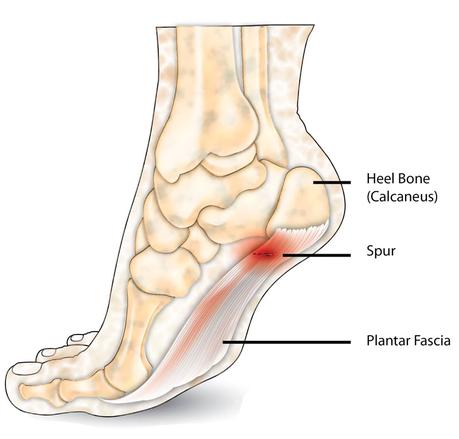
Symptoms of Heel Spurs
Inflammation of the sole or heel spur usually causes pain in the sole near the heel.
The pain usually worsens after waking up, although it can also be caused by standing for a long time or standing after sitting.
The pain is usually greater after exercise, not during exercise.
Causes of Heel Spurs
The curtain or (fascia) of the sole of your foot is in the form of a string. It is attached to the bow.
Too much may cause minor cracks in the fascia, just like a bow that is too long.
Frequent stretching and rupture of the fascia can cause irritation or inflammation of the fascia, although the cause is not known in many cases.
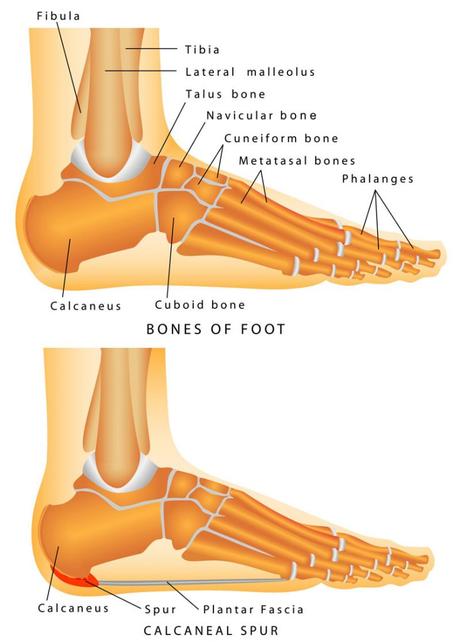
Risk Factors for Heel Spurs
Even if plantar fasciitis develops for no apparent reason, some factors can increase the disease’s risk.
- Age
Inflammation of the soles of the feet is more common in the ages of 40 to 60 years. - Certain types of exercise
Activities that put a lot of stress on your heel and connective tissue – such as long-distance running, ballet and aerobic dancing – can be effective in causing arthritis of the sole. - Mechanical defects of the foot
flat foot, high sole, and abnormal walking patterns can affect the weight distribution when standing and put more pressure on the plantar fascia. - Obesity
Excess weight puts extra stress on the fascia of your soles.
Jobs have to stand on their own two feet for a long time.
Factory workers, teachers, and others who spend most of their working hours walking or standing on hard surfaces can damage the plantar fascia.
What Are the Complications of Heel Spurs?
Failure to treat plantar fasciitis can lead to chronic heel pain that interferes with your regular activities.
Changing gait patterns to relieve the pain of plantar fasciitis may lead to foot, knee, hip or back problems.
How Is a Heel Spur Diagnosed?
Heel spurs or fascia, or plantar fasciitis are diagnosed based on your medical history and physical examination.
During the examination, your doctor will examine sensitive areas in your foot. The location of your pain can help determine the cause.
Heel Spur Imaging Tests
Your doctor may suggest an X-ray or MRI scan.
X-rays show a piece of bone protruding from the heel bone (thorn). In the past, these bony spines were often blamed for heel pain and were surgically removed. But many people with heel spurs do not have heel pain.
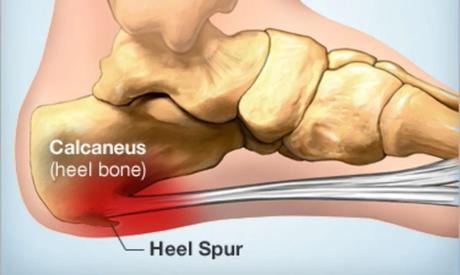
What Is the Treatment for Heel Spurs?
Most people with plantar fasciitis recover within a few months with regular treatment, including rest, applying ice to the painful area, and stretching.
Medications: Analgesics such as ibuprofen (Advil, Motrin IB) and naproxen sodium (Aleve) may reduce the pain and inflammation caused by plantar fasciitis.
Heel Spur Treatments
Stretching and Strengthening Exercises
Special equipment may relieve symptoms.
They are:
Physiotherapy: Usually, a physiotherapist can give you a series of exercises to stretch the plantar fascia and Achilles tendon and strengthen the lower leg muscles.

Night Splint
Your doctor may recommend that you wear a splint while sleeping that keeps your legs and arch arched.
This causes the Achilles tendon and tendon to stretch at night.Insoles
Your doctor may prescribe an orthosis to wear for days to help distribute pressure evenly on the soles of your feet.
- Surgical procedures or other methods of treating heel spurs
If treatment with the usual treatments described does not improve after several months of heel and sole pain, your doctor may recommend the following: Injection
Injection of steroid drugs in the painful area of the sole can relieve pain using ultrasound imaging. Platelet-rich plasma obtained from the patient’s blood can be injected to heal the tissue.
Multiple injections are not recommended as they can weaken the plantar fascia and possibly cause it to rupture.
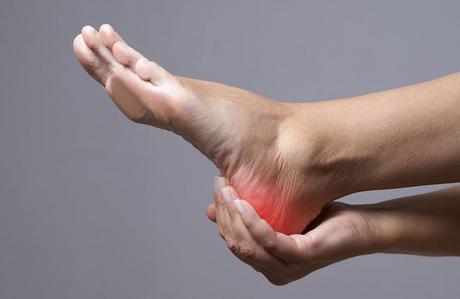
Extracorporeal Shock Wave Therapy
In this method, sound waves are directed to the painful area of the heel. These waves stimulate tissue healing.
This treatment is usually used for plantar fasciitis that has not responded to easier treatments.
Some studies show promising results but are not consistently effective.Ultrasonic Tissue Repair
This minimally invasive procedure uses ultrasound imaging to guide a probe or needle probe into the fascia tissue of the sole using ultrasound energy, the probe’s tip vibrates rapidly to break the damaged tissue, then suction or suction, and the damaged tissue is pulled out of the sole to repair the fascia.
Heel Spur Surgery
Few people need surgery to remove the plantar fascia from the heel bone.
It can be done as an open procedure or through a small incision with local anesthesia.
This is only an option in cases where the pain is severe and other treatments fail.
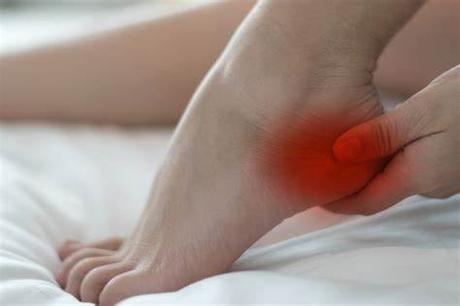
Lifestyle and Home Remedies for Heel Spurs
To reduce the pain of plantar fasciitis, follow these tips:
- Have the right weight for your height
The right weight of each person is equal to his height minus 110. Excess weight can put extra stress on the soles of your feet. - Choose the right shoes
Buy shoes with low to medium heels, thick soles, support for the foot’s arch, and extra cushions. - Do not walk barefoot.
- Do not wear worn-out shoes
Replace your old shoes with new ones before they lose their proper sole and cushioning, especially if you are a runner and athlete. - Change your exercise
Instead of walking or jogging, try a less effective exercise such as swimming or cycling. - Use ice
Wrap an ice pack in a towel and hold it on the sore spot for 15 minutes three or four times a day. Cooling can help reduce pain and inflammation. - Correct your arches
Simple home exercises can stretch the sole muscles of the foot, the Achilles tendon and the calf muscles.
